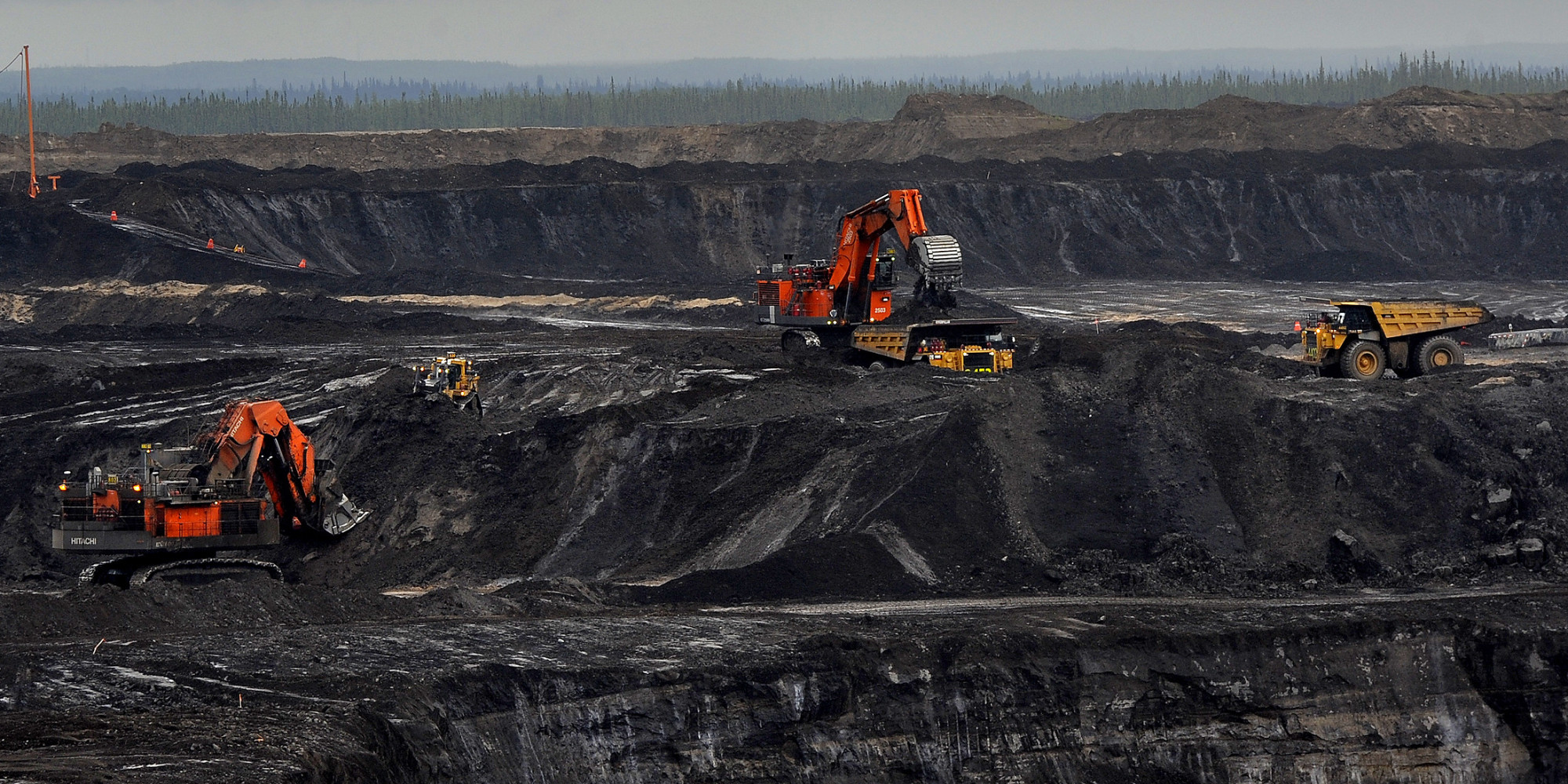Science Seen Physicist and Time One author Colin Gillespie helps you understand your world.
Canada’s Oil Sands Are the Target of Saudi Survival Strategy The House of Saud is locking oil sands in the ground
Strategy—as I use the term—is all about survival in a situation. So much of what we know of it relates to war. But the world has many other life-and-death situations. Seeing them through the eyes of those who choose to live can cast new light on complex questions. Recent news gives us an example: Why are oil prices now so low and what should we expect to happen?
Saudi Arabia is the world’s leading oil producer. Ten years ago it held almost one fifth of the world’s proven oil reserves. Canada’s vast oils-sands deposits now dilute its position. Though so far producing only a small part of world supply, Canada looms large in Saudi eyes because its potential future oil-sands production challenges the Sauds’ security. Their response is predatory pricing. Their target is specifically Canada, not in some fit of retaliation, but in a calibrated move because they can and must keep the Alberta oil sands off the market permanently. This claim calls for explanation.
The House of Saud is a family dictatorship. It rules with fear and money. Fear flows from decapitating perceived threats. And short-term money is on tap; its sovereign wealth fund is said to hold some seven-hundred billion dollars. But, longer-term, its money will depend on selling oil. Even an appearance that its money flow is insecure might threaten personal survival of the Sauds. Thus in their eyes (strictly—since the quiet palace coup early this year—in the eyes of the family’s Sudairi branch) the oil sands pose a literally existential threat. What, then, is the Sauds’ survival strategy? Not far beneath the surface there’s a simple answer that makes sense out of their seemingly surprising moves.
Both supply of and demand for oil are inelastic. That is, producers tend to keep on producing and consumers to keep on consuming with scant regard to price. A relatively small shortfall of production below consumption runs up prices out of all proportion. Likewise a small excess drives them down. So the Sauds, with only an eighth of world production but with excess capacity, can more or less control world prices if they are willing to accept the cost. As the U.S. Energy Information Administration says, ‘indications of changes in crude oil production from Saudi Arabia, OPEC’s largest producer, frequently affect oil prices.’ The increasing supply coming from large new reserves in America confronted Saudi rulers with a Hobson’s choice: assert their dominance or not. For them the latter could not be an option.
As is their wont, the oil-producers’ cartel OPEC would no doubt prefer to trim production to support oil prices. But they will not do this without the Sauds, who have proclaimed they will maintain their market share. In fact they have steadily increased production over the last five years by some thirty percent, and this year the new Sudairi rulers have not wavered from this policy. In consequence, with a boost from American sources, world supply continues to exceed demand despite under-production from Iran, Iraq and Libya. With words and actions the Sauds are keeping benchmark prices under sixty dollars per barrel. One may assume this range is what they want for now.
Saudi costs are so low they can still make money but, even with increased production, they are cutting their own annual revenues by hundreds of billions of dollars. Over time this represents a huge investment. Whom do they aim to influence? Some see geopolitics in action as low prices hurt Russia and Iran but neither of those games seems worth the candle. Some say the target may be American frackers. This would make even less sense to the Sauds. Low prices are no doubt constraining shale-oil drilling. But frackers are nimble; they can reduce costs through innovation; and they can finance a new well and have it in production within weeks. Even if a further price decrease cuts into it more deeply, fracking will be back in action swiftly when the Sauds let prices rise to restore their revenues.
By contrast the Canadian oil-sands’ situation offers a unique opportunity for the Sauds to secure the family’s future. Low prices have big money fleeing oil sands leaving only money that is already tied to the ground. Will money come back later? To build a major oil-sands mine and bring it into operation can take more than a decade and billions of dollars. New mines will need a hundred dollars or more per barrel to project a profit. When prices rise, new investment predicated on them will look for assurance that they won’t collapse. There will be no way to get it while the Saudis can push prices down again. Likely they won’t need to actually do this as one bloodbath may suffice to teach the lesson. Meanwhile they are getting help from some unlikely sources. Long-committed oil-sands plants, now coming online, help to keep supply in excess. Governmental inaction on the carbon file and hardening opinion against the oil sands brand are making large investments even less secure. New production would need new transport infrastructure that faces entrenched opposition in both Canada and the United States.
Many factors influence near-term oil prices. Taking the perspective of the Sauds’ survival lays bare the underlying paradigm: their strategy is driving investment from the oil sands and we can see why it will not return. Canada’s energy-superpower play is over. Those Alberta sands are doomed to languish in the ground.
Image source: imgkid ; http://imgkid.com/oil-sands-before-and-after.shtml


No comments yet.